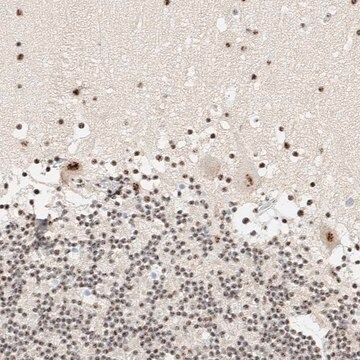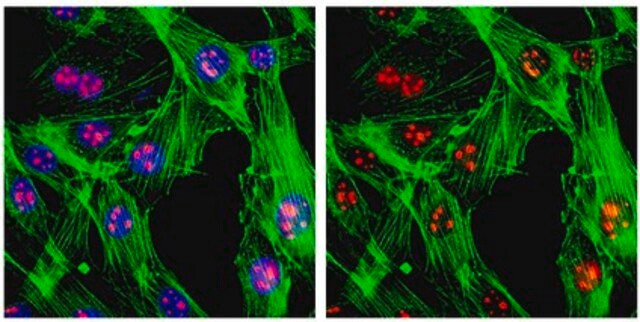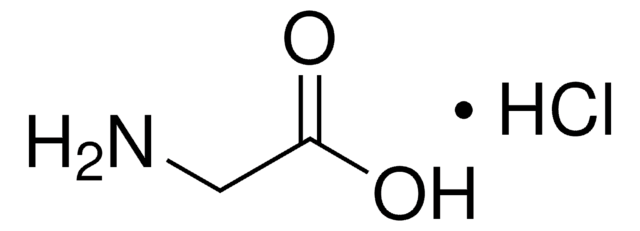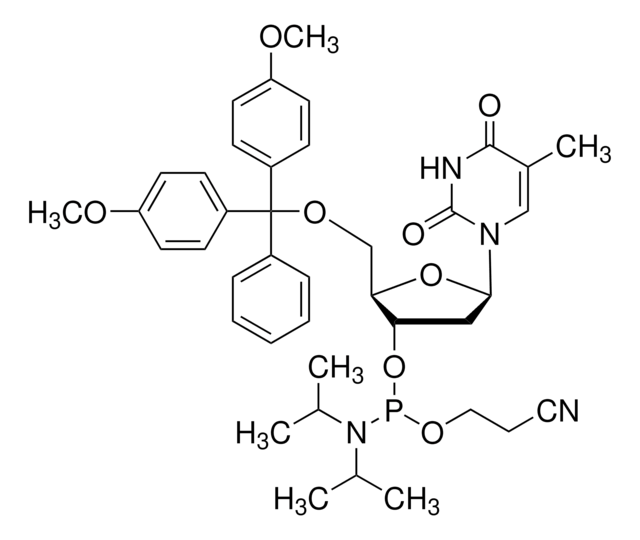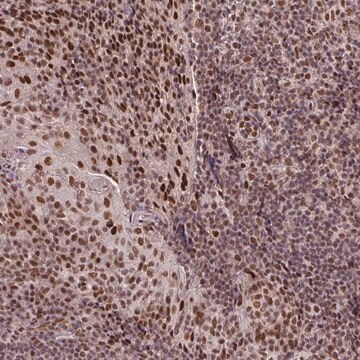S4045
Monoclonal Anti-Splicing Factor SC-35 antibody produced in mouse
clone SC-35, ascites fluid
Sinonimo/i:
Anti-SC-35, Anti-SC35
About This Item
Prodotti consigliati
Origine biologica
mouse
Livello qualitativo
Coniugato
unconjugated
Forma dell’anticorpo
ascites fluid
Tipo di anticorpo
primary antibodies
Clone
SC-35, monoclonal
PM
antigen 35 kDa (a doublet)
contiene
15 mM sodium azide
Reattività contro le specie
frog, Drosophila, newt, rat, human
tecniche
electron microscopy: suitable
immunocytochemistry: suitable
immunoprecipitation (IP): suitable
indirect ELISA: suitable
indirect immunofluorescence: 1:2,000 using cultured human fibroblasts
Isotipo
IgG1
Condizioni di spedizione
dry ice
Temperatura di conservazione
−20°C
modifica post-traduzionali bersaglio
unmodified
Informazioni sul gene
human ... SFRS2(6427)
rat ... Sfrs2(494445)
Categorie correlate
Descrizione generale
The essential non-snRNP splicing factor SC-35 displays a speckled distribution in the nucleus that co-localizes with snRNPs, but unlike snRNPs, SC-35 does not give diffuse nuclear labelling. In the nucleus, snRNPs are concentrated in coiled bodies and in the speckled regions, whereas SC-35 is found in speckles but not in coiled bodies.
Specificità
Immunogeno
Applicazioni
- fluorescence image analysis
- immunohistochemistry
- two or three color immunofluorescence staining
- enzyme-linked immunosorbent assay (ELISA)
- immunohistology
- immunoelectronmicroscopy
- immunoaffinity purification
- immunoprecipitation
Indirect immunofluorescence: a dilution of at least 1:2,000 was determined by staining cultured human fibroblasts.
Esclusione di responsabilità
Non trovi il prodotto giusto?
Prova il nostro Motore di ricerca dei prodotti.
Codice della classe di stoccaggio
10 - Combustible liquids
Classe di pericolosità dell'acqua (WGK)
nwg
Punto d’infiammabilità (°F)
Not applicable
Punto d’infiammabilità (°C)
Not applicable
Scegli una delle versioni più recenti:
Possiedi già questo prodotto?
I documenti relativi ai prodotti acquistati recentemente sono disponibili nell’Archivio dei documenti.
Il team dei nostri ricercatori vanta grande esperienza in tutte le aree della ricerca quali Life Science, scienza dei materiali, sintesi chimica, cromatografia, discipline analitiche, ecc..
Contatta l'Assistenza Tecnica.